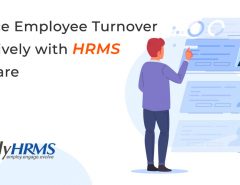The concept of contingent workforce reflects the labor resource pool where the employers recruit the members on the basis of demand. The resource pool is made up of freelancers, independent employees and professional contingent workforce management companies who are not belonging to the official payroll of the company as full-timers. These people are hired from the staffing agency and they either work on-site or remotely. Naturally, they get minor benefits from the permanent employees & most importantly, not protected by any internal laws of labor & employee of the hiring companies.
Some contingent workforce trends you should be knowing
The global employment, in general, is experiencing a paradigm shift and is often being termed as Workforce 2.0 or the Future Of Work. Also known as the Gig Economy, contingent workforce has given some astonishing figures.
Did you know? 1/3rd of all employees of the world are freelancers? The figure is all set to change as ½ of the total employees will be forming the gig economy by 2020. – Source
Some advantages of the contingent workforce solutions
One of the significant benefits is the cost-effectiveness that the organizations get while hiring the contingent workforce. They save a big chunk of expenditure on the administrative costs that are entwined with the hiring and maintenance of the full-timers.
The hiring organizations also do not have to make any payments to the social security of the gig workforce & also make any other tax or payroll expenses. The gig workers do not have to be paid perks of health insurance or paid leaves.
Hiring contingent workforce lays flexibility in the organization's functionality. Since they are hired on a ad-hoc basis, the contract can be terminated once the requisites are fulfilled. It is to be understood that the gig workers make up for the organization’s temporary skill-gap which the full-timers do not have for a particular work.
Here are some other benefits:
- Easy selection of top talents project-wise
- Lesser or no usage of the company's own equipment
- Non-continual remuneration
- Increased competitiveness
- Reduced times on salary and performance evaluations
- Lower effect on the work council issues
- Reduced fixed HR Costs
- Continual business growth
Some contingent workforce strategies for hiring organizations to know
The contingent workforce strategy of a company differs from those of the competitors. Thanks to the uniqueness, the marketing strategies the outcome will be exclusive as well. So, what should be your contingent workforce management best practices to make the best out of your selected workforce?
- What are your organization’s values and missions? How do you deal with your clients? How do you work for your partners? Answers to all of these will decide the guidelines on the basis of which you can select gig workers for your project.
- So, when you are outsourcing with the contingent employees, just get a clear set of rules and guidelines that will focus on the contract by both the international and domestic norms, as applicable. This will reflect the stringent baseline for the outsourcing contract for a convenient comprehension of the process.
- Make sure the contracts comply with the business protocols so when the audits take place, you do not get stuck to any legal issues. Always keep the details of the partnership updated.
- Continuing the previous point, it is crucial to involve the legal & HR teams from the very inception of any contract so that they have a better transparency of the entire deal for adept tackling of any issues.
- Install an automated HRM solution so that all your outsourcing details are stored and managed accurately. Plan and execute the entire project with the gig employee with the technical assistant that works intuitively to perform and deliver excellence.
The disadvantages of recruiting employees from the gig economy
Obviously, it is natural for the concept to have its fair share of disadvantages. Adapting to challenges is not always easy and in the case of freelancing employees, it becomes harder for them to come out of their comfort zone and work under a brand, even if it is for certain days. Here are more issues that you can face:
- It becomes riskier to share the internal information of the company to the employee who is on a contractual term. Non-permanent workers often can turn out to be untrustworthy and harmful to the company's stand in the market.
- Due to the worker misclassification, organizations may often face compliance and other legal issues.
- In case there is a discrepancy on the company's part of classifying the employee, it is subjected to paying hefty penalties and fines.
Finally, in a nutshell…
As more businesses are now opting for contingent recruitment, they are required to be prepared for meeting the demands and challenges that are associated with managing it. It is imperative to implement standard processes for developing and hiring a contingent workforce.





Leave a Reply